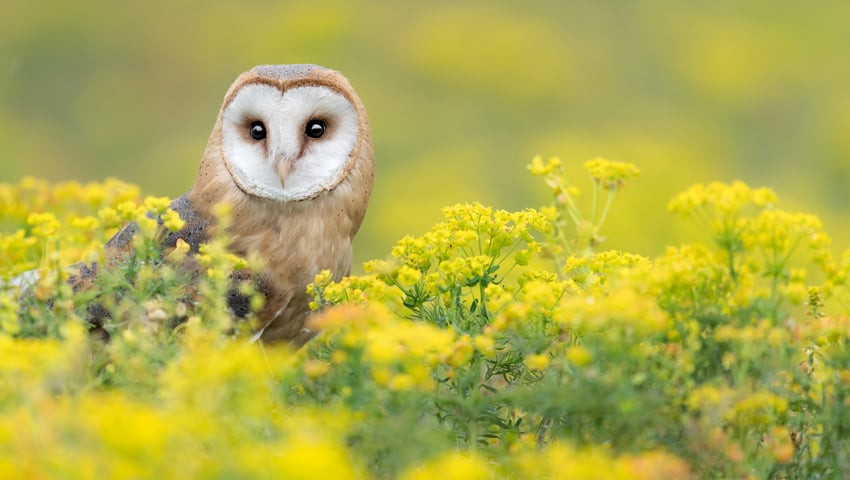A new study provides strong evidence that not only is nature conservation successful, but that scaling up conservation interventions would be transformational for halting and reversing biodiversity loss.
The study, The positive impact of conservation action, was published in the journal Science.
These findings of the impact of conservation action are crucial, as more than 44,000 species are currently documented as being at risk of extinction, the result of which would cause tremendous consequences for the ecosystems that stabilise the climate and provide billions of people around the world with clean water, livelihoods, homes and cultural preservation, among other ecosystem services.
To address this risk, governments recently adopted new global targets to halt and reverse biodiversity loss, making it even more critical to understand whether conservation interventions are working.
“If you look only at the trend of species declines, it would be easy to think that we’re failing to protect biodiversity, but you would not be looking at the full picture,” said Penny Langhammer, lead author of the study, an adjunct professor of biology in the School of Life Sciences at Arizona State University (ASU).
“What we show with this paper is that conservation is, in fact, working to halt and reverse biodiversity loss. It is clear that conservation must be prioritised and receive significant additional resources and political support globally, while we simultaneously address the systemic drivers of biodiversity loss, such as unsustainable consumption and production.”
Although many studies look at individual conservation projects and interventions, and their impact compared with no action taken, these papers have never been pulled into a single analysis to see how and whether conservation action is working overall.
The co-authors conducted the first-ever meta-analysis of 186 studies – including 665 trials – that looked at the impact of a wide range of conservation interventions globally, and over time, compared with what would have happened without those interventions.
The studies covered over a century of conservation action and evaluated actions targeting different levels of biodiversity: species, ecosystems and genetic diversity.
Beth Polidoro, an associate professor of environmental chemistry and aquatic conservation at ASU, also contributed to the study. She said, “We have a lot of science-based evidence for successful conservation actions that can directly mitigate threats while working to improve species populations.
“However, there are still many gaps in understanding the specific combination of contexts that are needed for these actions to be successful over the long term – namely the economic, social, technical and other factors that are important for facilitating sustainable conservation outcomes.”
The meta-analysis found that conservation actions – including the establishment and management of protected areas, the eradication and control of invasive species, the sustainable management of ecosystems, habitat loss reduction and restoration – improved the state of biodiversity or slowed its decline in the majority of cases (66%) compared with no action taken at all.
And when conservation interventions work, the paper’s co-authors found that they are highly effective.
For example:
- Management of invasive and problematic native predators on two of Florida’s barrier islands, Cayo Costa and North Captiva, resulted in an immediate and substantial improvement in nesting success by loggerhead turtles and least terns, especially compared with other barrier islands where no predator management was applied.
- In the Congo Basin, deforestation was 74 per cent lower in logging concessions under a forest management plan (FMP) compared with concessions without an FMP.
- Protected areas and Indigenous lands were shown to significantly reduce both the deforestation rate and fire density in the Brazilian Amazon. Deforestation was 1.7 to 20 times higher and human-caused fires occurred four to nine times more frequently outside the reserve perimeters compared with inside.
- Captive breeding and release boosted the natural population of Chinook salmon in the Salmon River basin of central Idaho, with minimal negative impacts on the wild population. On average, fish taken into the hatchery produced 4.7 times more adult offspring and 1.3 times more adult second-generation offspring than naturally reproducing fish.
Jake Bicknell, co-author of the paper and a conservation scientist at DICE, University of Kent, said, “Our study shows that when conservation actions work, they really work. In other words, they often lead to outcomes for biodiversity that are not just a little bit better than doing nothing at all, but many times greater. For instance, putting measures in place to boost the population size of an endangered species has often seen their numbers increase substantially. This effect has been mirrored across a large proportion of the case studies we looked at.”
Claude Gascon, co-author and director of strategy and operations at the Global Environment Facility, said, “Conservation action works – this is what the science clearly shows us. It is also evident that to ensure that positive effects last, we need to invest more in nature and continue doing so in a sustained way. This study comes at a critical time where the world has agreed on ambitious and needed global biodiversity targets that will require conservation action at an entirely new scale.
“Achieving this is not only possible, it is well within our grasp as long as it is appropriately prioritised.”
